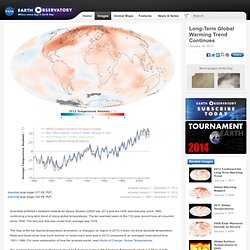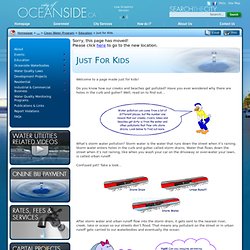

Two young scientists break down plastics with bacteria. Water Conservation Around the House. Conservation Science: STRAW Project. Point Blue's STRAW Program coordinates and sustains a network of teachers, students, restoration specialists and other community members to plan and implement watershed studies and restoration projects.

STRAW's watershed science education activities emphasize project based learning and offer an integrated learning experience for students to work together, connect to their local watershed, and be empowered by their actions. Each year approximately 3,500 students participate in 50 restoration work days, often planting 4,500 native plants! To support hands-on science education and habitat restoration, donate now, and type STRAW in the designation category.
Some of the program's goals include: improved student science skills, increased knowledge and stewardship of the local environment, improved teacher capacity to teach environmental and climate-smart restoration concepts, reconnected communities, climate-smart conservation to help reduce the impacts of environmental change. NEW! Classroom. Long-Term Global Warming Trend Continues. Scientists at NASA’s Goddard Institute for Space Studies (GISS) say 2012 was the ninth warmest year since 1880, continuing a long-term trend of rising global temperatures.

The ten warmest years in the 132-year record have all occurred since 1998. The last year that was cooler than average was 1976. The map at the top depicts temperature anomalies, or changes, by region in 2012; it does not show absolute temperature. Reds and blues show how much warmer or cooler each area was in 2012 compared to an averaged base period from 1951–1980. For more explanation of how the analysis works, read World of Change: Global Temperatures. The average temperature in 2012 was about 14.6 degrees Celsius (58.3 degrees Fahrenheit), which is 0.55°C (1.0°F) warmer than the mid-20th century base period. “One more year of numbers isn’t in itself significant,” GISS climatologist Gavin Schmidt said. Carbon dioxide traps heat and largely controls Earth’s climate. Instrument(s): In situ Measurement. Which Types of Plastics Can Be Recycled? City of Oceanside, CA Website - Just for Kids. Welcome to a page made just for kids!

Do you know how our creeks and beaches get polluted? Have you ever wondered why there are holes in the curb and gutter? Well, read on to find out… What’s storm water pollution? Storm water is the water that runs down the street when it’s raining. Confused yet? After storm water and urban runoff flow into the storm drain, it gets sent to the nearest river, creek, lake or ocean so our streets don’t flood. That’s a pretty long list of stuff that can pollute our water. Chemicals like oil, chlorine (used for swimming pools), cleaners, pesticides and fertilizers can harm the animals, bugs and plants that live in the water, and can make people sick when it floats down to the ocean. Too many leaves and grass clippings can take the oxygen out of water and suffocate the plants and animals who need oxygen to breathe. The waste from our pets is very harmful to our waterbodies. Did you ever think air pollution from cars could pollute our water?
Feel Smarter Yet? ElectroCity. Disney's Planet Challenge - MIDDLE SCHOOL OVERVIEW. Thirstin's Question and Answer Game.